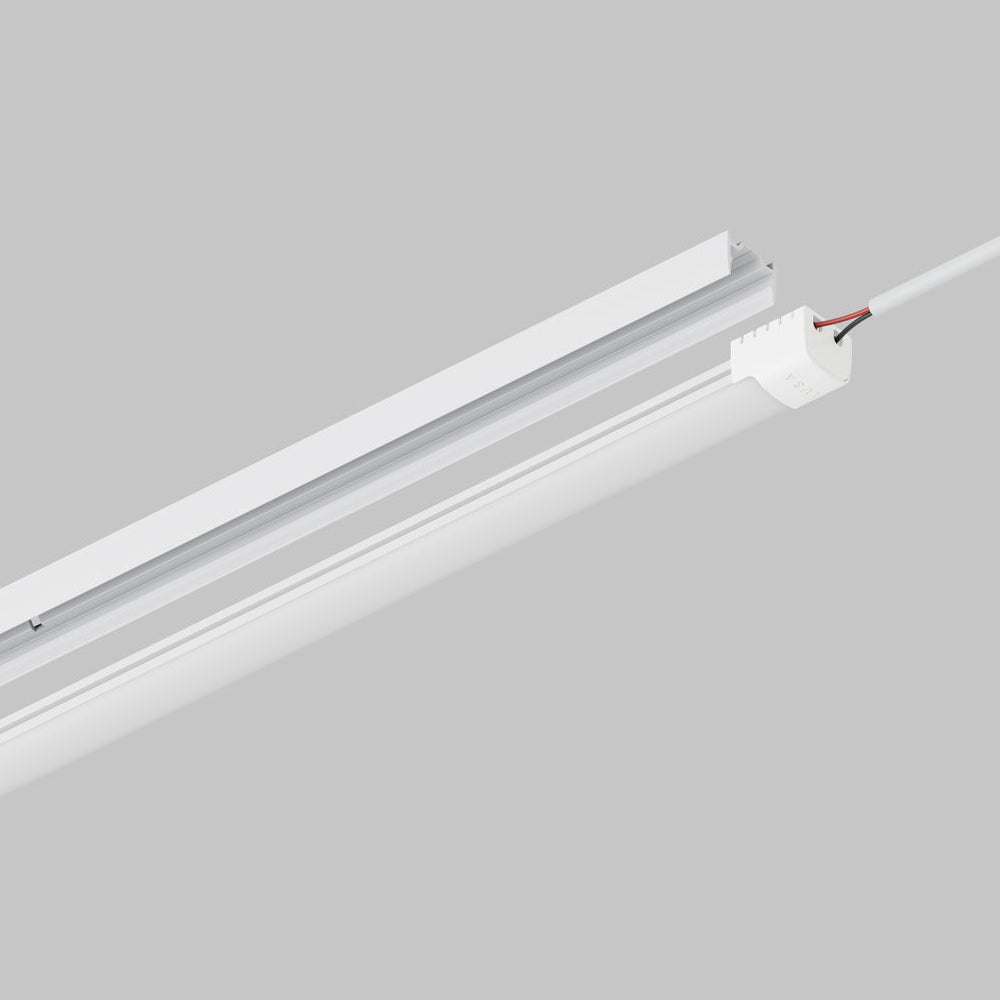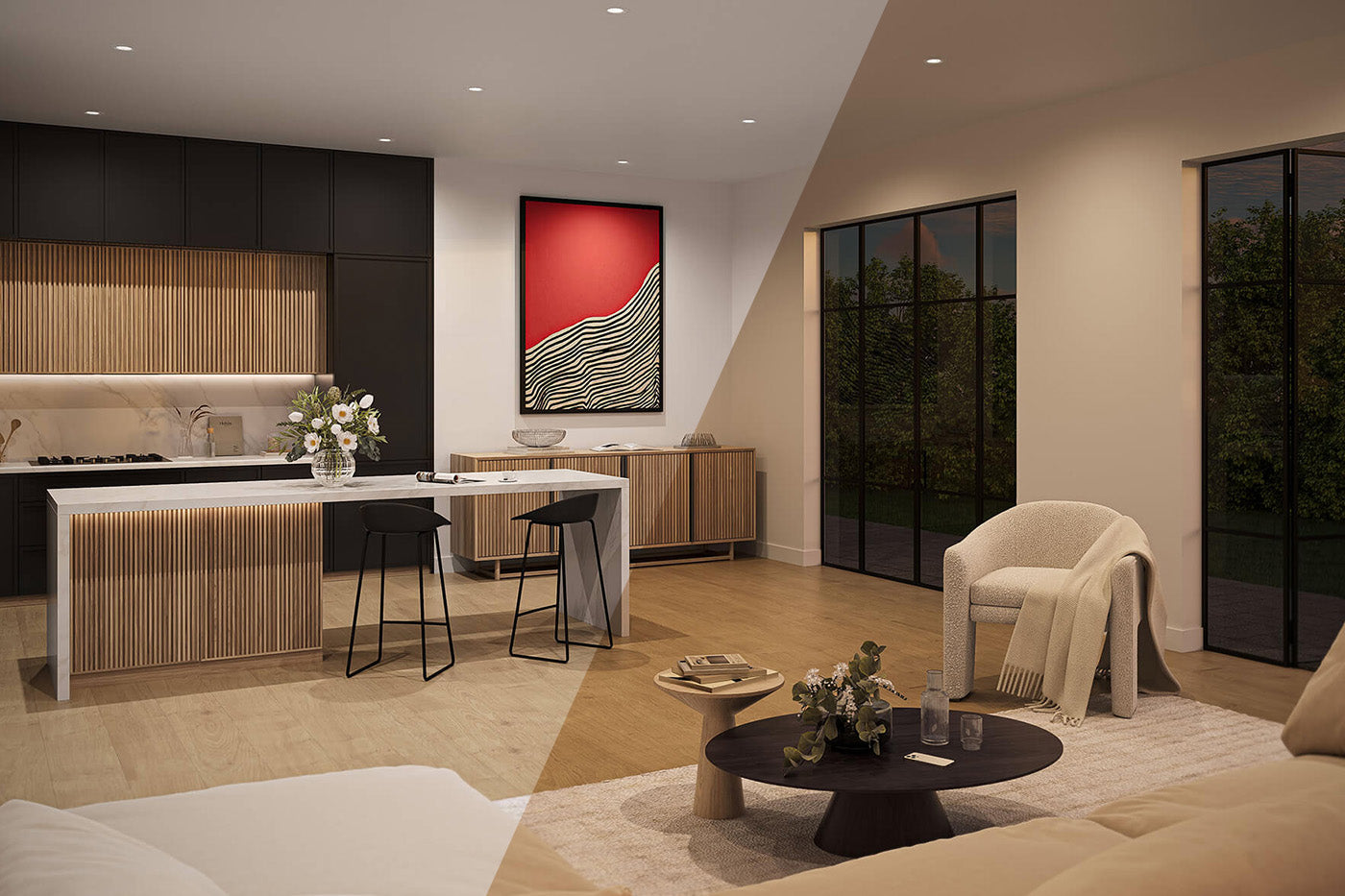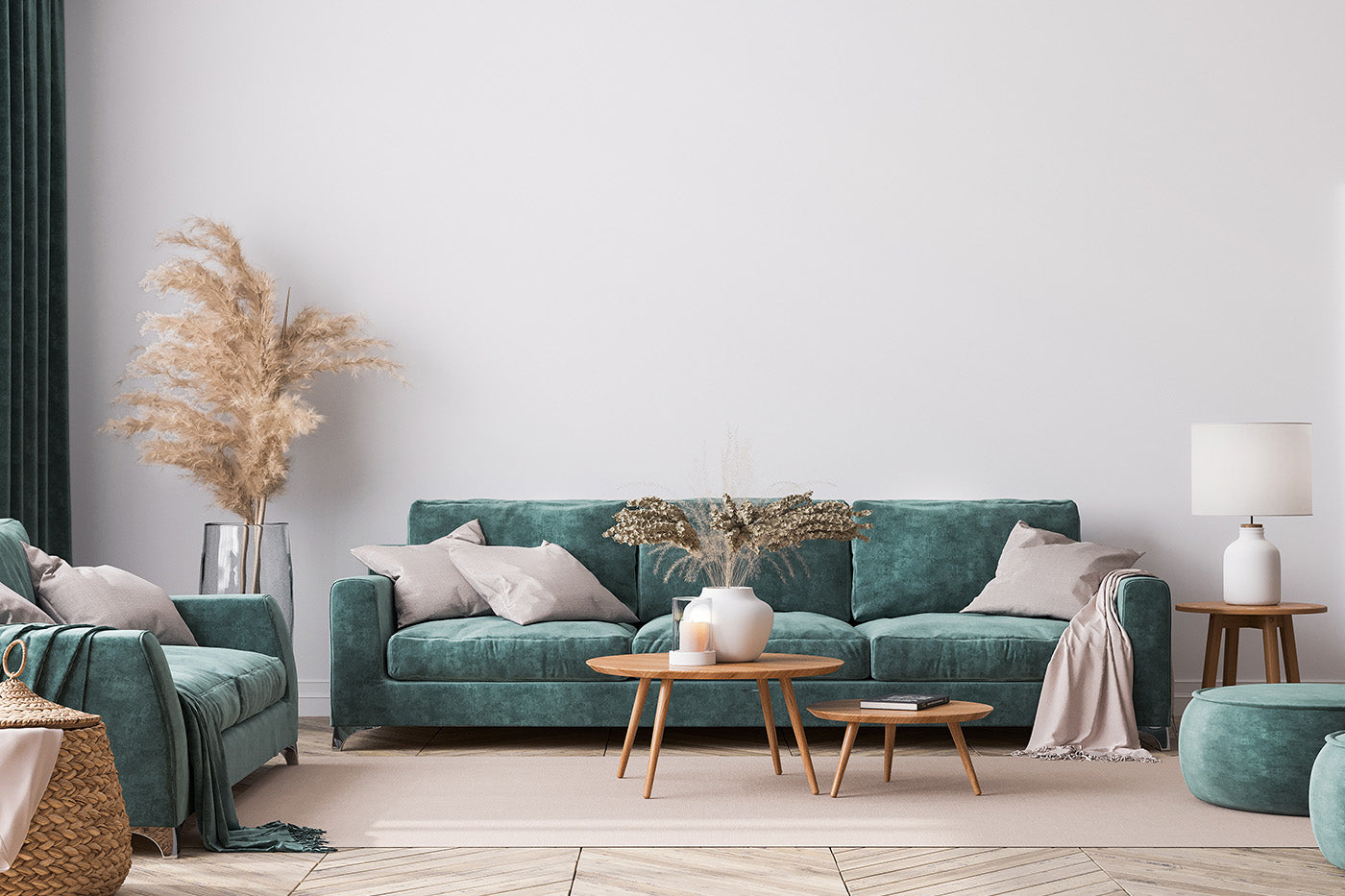Lighting is not just a functional aspect of home design — it's the essence that breathes life into every space, influencing mood, aesthetics, and well-being.
The warmth or coolness of light can shape the atmosphere of a room, affecting everything from how we perceive colors to how we feel at different times of the day. While we strive to create homes that are true sanctuaries, the choice between warm and cool light is a fundamental consideration.
This article will explore the nuances of warm and cool lighting, offering a path for homeowners to make informed decisions that enhance their homes' beauty and functionality.
What Is Warm and Cool Light?
The terms "warm" and "cool" light are rooted in both the science of light and the art of human perception, drawing on our innate connection to the natural world. These descriptors evoke the emotional and physical responses triggered by different qualities of light, reflecting how deeply intertwined light is with our daily experiences and environments.
The concept of warm and cool light originates from how we experience light in nature. Warm light is reminiscent of the golden hues of sunrise and sunset, times when the sun is low on the horizon, casting a soft, reddish glow that feels intimate and comforting. This warmth in color temperature parallels the warmth we associate with firelight or candlelight, sources of illumination that have been used for millennia to create a sense of warmth and safety.
Conversely, cool light mimics the midday sun when the sky is at its brightest and bluest. This light is perceived as cooler because it resembles the light from a clear sky, which is more abundant in blue wavelengths. Historically, the only source of such cool, bright light was the midday sun, which energizes and increases alertness, supporting activities that require concentration and detailed attention.
The terminology also intersects with art and color theory, where colors are often described as "warm" or "cool" based on their visual impact and the feelings they evoke. Warm colors, like reds, oranges, and yellows, are thought to advance or come forward in a space, creating a sense of coziness and warmth. Cool colors, such as blues and greens, recede, creating a sense of calm and tranquility.
What Is the Science of Warm Light?
With its soft glow, warm light resembles a sunset, creating comfort and relaxation. Emitting a color temperature between 1800 and 3000 Kelvin, it casts a reddish-to-yellowish hue, creating an ambiance of warmth and intimacy.
This quality of light is particularly beneficial in areas of the home dedicated to relaxation and unwinding, such as living rooms and bedrooms. The soothing nature of warm light makes it the ideal choice for evening routines, which aim to create a tranquil environment conducive to relaxation and sleep.
In addition to promoting relaxation, warm light enhances the aesthetic appeal of a space by softening the appearance of objects and spaces. It flatters skin tones and textures, making it a preferred choice for dining areas where it can create a welcoming and flattering ambiance for guests. Furthermore, warm light can make a room feel cozier and more inviting, a quality that is often desired in family gathering spaces and areas meant for leisure.
The psychological benefits of warm light are noteworthy as well. Exposure to warm light in the evenings can help signal to the body that it's time to wind down, supporting the natural circadian rhythm. This can improve sleep quality and overall well-being, highlighting the importance of choosing the right light temperature for spaces dedicated to relaxation and rest.
What Is the Science of Cool Light?
On the spectrum's other end lies cool light, with its color temperature exceeding 3500 Kelvin. This light mimics the clear, bright qualities of natural daylight, casting a bluish-white glow that energizes and enhances focus.
Cool light is particularly advantageous in areas of the home where tasks require attention to detail, such as kitchens and home offices. In these spaces, the crispness of cool light helps improve visibility and concentration, making it easier to perform tasks efficiently and accurately.
Beyond its functional benefits, cool light has the unique ability to invigorate and stimulate the mind. This makes it an excellent choice for workspaces, where maintaining alertness is key. It is often used in hospitals, where the precision and clarity provided by cool light are essential for cleaning tasks.
The physiological effects of cool light play an important role in regulating the body's internal clock or circadian rhythm. Exposure to cool light during the day helps maintain alertness and boost mood and energy levels. By mimicking the natural light of day, cool light signals to the body that it's time for activity and wakefulness, aiding in the natural ebb and flow of energy throughout the day.
Choosing between warm and cool light requires consideration of the specific functions and activities that take place in a room. By understanding the distinct qualities and benefits of warm and cool light, homeowners can create spaces that are both visually appealing and functionally tailored to their lifestyle and well-being.
How Can You Utilize Both Warm and Cool Light?
When seeking the perfect home ambiance, why choose between warm and cool light when you can have both? Modern lighting technology offers innovative solutions that allow homeowners to tailor their environment's lighting according to the time of day or their specific needs.
Incorporating both warm and cool lighting into your home is not just about choosing the right bulbs. Here are some practical tips for achieving warm and cool lighting with the latest technological advancements to create a versatile and welcoming space.
Embrace Smart Lighting Systems
Smart lighting systems are at the forefront of lighting technology, utilizing control panels that allow users to adjust the color temperature and brightness of their lights seamlessly. Users can set scenes and schedules to automatically adjust lighting based on time of day or desired room use.
Advanced lighting systems deliver great performance but are a high-cost solution. Lower-cost smart bulbs can change color temperature but tend to be less reliable and produce less consistent light output.
Use Dimmer Switches and Warm Dim
For a simpler upgrade, consider installing dimmer switches and fixtures with warm dim. Warm dim LED fixtures are designed to work similarly to traditional incandescent light bulbs. They change color temperature as they are dimmed. At full brightness, they emit a cooler color temperature, and the temperature warms as the light is dimmed.
This can be especially useful in areas like the living room or bedroom, where you might want the flexibility to adjust both the intensity and the warmth of the light to match the activity or time of day. Warm dim removes blue color light as they are dimmed to create the warm effect, and many believe this helps with a good night’s sleep.
Utilize Task Lighting
Task lighting is important in areas where you perform specific tasks, such as cooking or working. Under-cabinet lighting and desk lamps with cool light can enhance concentration and detail.
Consider a warmer temperature for reading lamps if that’s an activity you often do before bed. This targeted approach ensures you have light where you need it most without affecting the overall ambiance of the room.
The Final Beam
In exploring warm versus cool light, we tap into light's profound impact on our daily experiences, emotions, and overall well-being. LUSA’s modern recessed lighting with warm dim makes this balance more attainable than ever, offering a pathway to a home that looks beautiful and feels right in every sense.
Consider this an invitation to reimagine your home's lighting not just as a functional necessity but as a cornerstone of your well-being and lifestyle. With LUSA’s commitment to quality, design, and sustainability, the perfect lighting environment is supported every step of the way.
Contact us today to get started elevating your home lighting experience.
Sources:
Effect of warm/cool white lights on visual perception and mood in warm/cool color environments | NIH
Effects of illuminance and correlated color temperature of indoor light on emotion perception | NIH
The effect of color temperature of lighting sources on mental activity level | NIH



